As the COVID-19 pandemic continues spreading around the world we have also seen a significant increase in the number of cases in Malta, making it more essential than ever that everyone is protected. Face masks should be worn in public areas to avoid the spread of the virus and protect ourselves and others and marginalized communities will need them more than ever.
MOAS is now ready to launch another round of face mask home production to make sure that everyone, including the most vulnerable on the island, can have a face-mask at their disposal to be worn in public areas or on public transport (where face-masks are required by law).
For the previous round of this project, in April, our lovely team of volunteers around Malta have been able to produce over 6,000 reusable, washable face masks to distribute to the all around the island. We wish to do the same this round and manage to engage with the community by calling on our volunteers again and invite anyone who wants to help us to join us in this project!
Our project is now also featured on Malta Together website.
If you do not have a sewing machine, but you are still willing to help us for this project, there many ways you can do so:
– Helping us with the drop off of materials or the pick-up of finished masks;
– Support us for the costs of the material for the masks by donating what you can on https://www.moas.eu/donate/
If you want to join our project and our amazing team of volunteers just email us at [email protected] and just watch the video or follow these instructions to make reusable face-masks to support our community!
What you’ll Need:
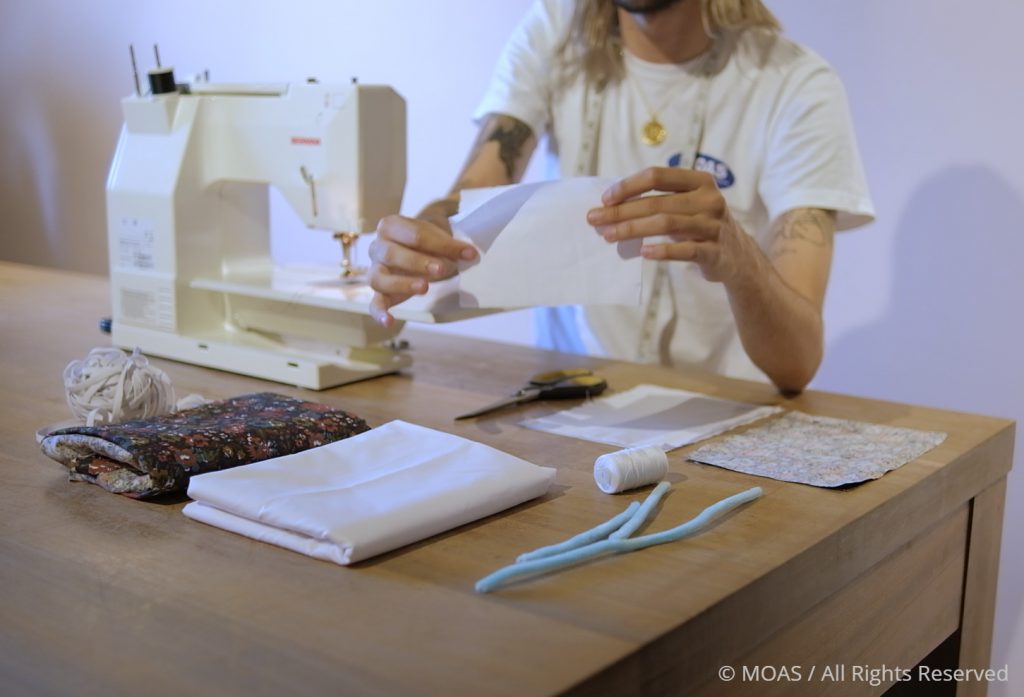
- Two 8-inch x 6-inch (20,5 cm x 15 cm) rectangles of fabric (one patterned & one white)
- One 4-inch x 6-inch (10cm x 15cm) piece of white fabric (for the filter)
- Two strips of 7 inches (18 cm) lengths of 6mm elastic,
- Pipecleaner divided into 2 pieces of 5 inches (12,5 cm) each
- Ruler
- Sharp scissors
- Thread
- Pencil/chalk
- Sewing machine
- Pins
SIZES FOR CHILDREN MASKS:
- Two 7-inch x 5,5-inch (18cm x 14cm) rectangles of fabric (one patterned & one white)
- One 4-inch x 5,5-inch (10cm x 14cm) piece of white fabric (for the filter)
- Two strips of 6 inches (15cm) lengths of 6mm elastic
- Pipecleaner divided into 2 pieces of 4 inches (10cm) each
Masks should be made of a 100% cotton fabric with a tight weave. Ideal options are poplin or shirting fabrics. Fabric needs to be stiff, with no stretch, to keep the shape and facilitate pleating.
Video tutorial:
Follow this MOAS masks tutorial made by Maltese designer Luke Azzopardi who will guide you through each step of the process!
Instructions:
- Stitch the 4” x 6” filter to the backside 8”x 6” white fabric in the middle:

- Place the printed fabric upside down on top of the white fabric with the pattern facing inward and filter on the outside (once you turn this inside out in a later step the filter will be in between the 2 layers of fabric). Start sewing the fabric together at the centre of one of the long edges and sew toward the corner, stopping just before the corner:
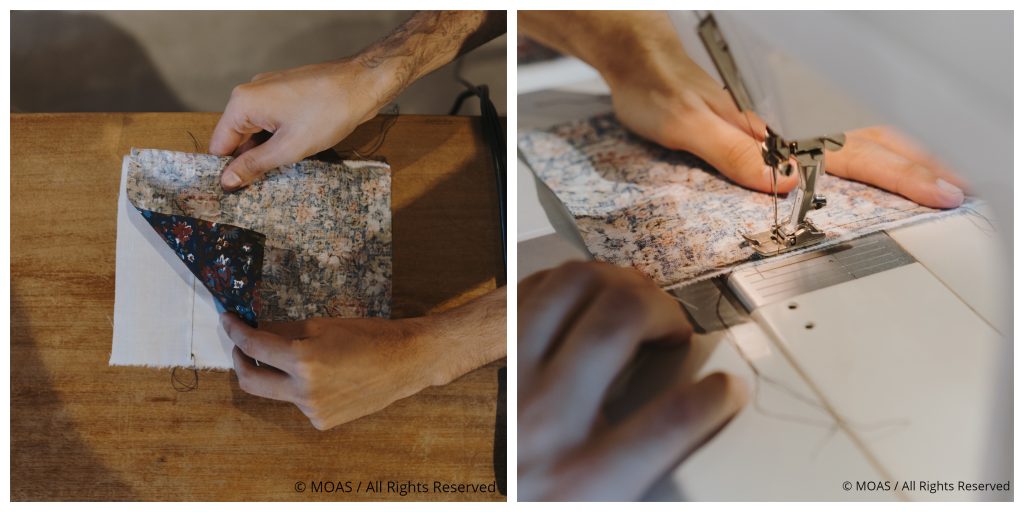
- Once at the corner, sew one end of an elastic strap into the corner with the length of the elastic strip trailing at a 45° angle in toward the middle of the mask between the 2 layers of fabric. Sew back and forward to secure the elastic:
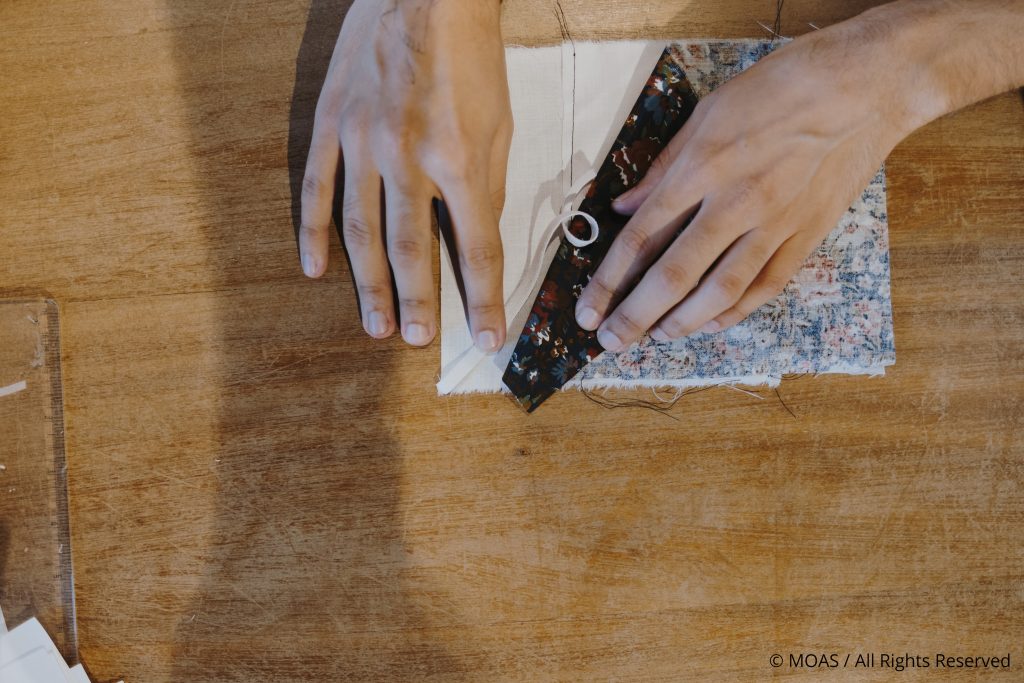
- Stitch on along the short end of the mask toward the next corner and secure the other end of the same elastic strip in place as above.
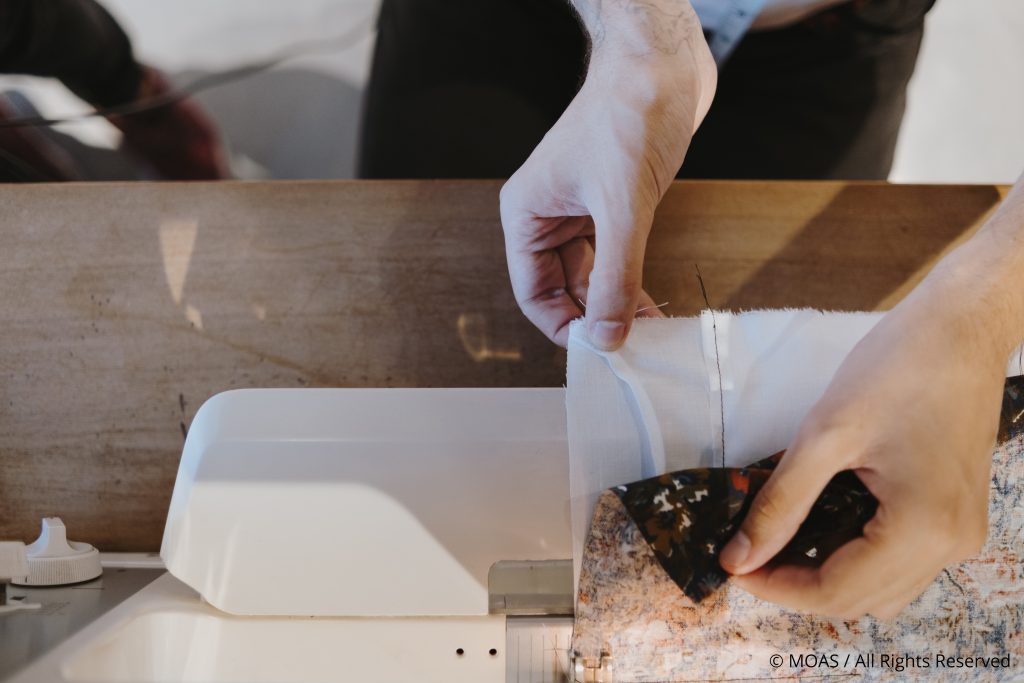
- Sew along the other long edge toward the third corner, secure second elastic strip in place and repeat for final corner before sewing back toward the starting point, leaving a small 2.5”/3.5” (6cm/7cm) gap. Close off sewing and cut the extra thread.
- Flip the mask inside out through the gap left in the mask. You should now have a neat, flat rectangle with the pattern on the outside and filter in the middle with elastic on the outside secured in through the corners of the mask:
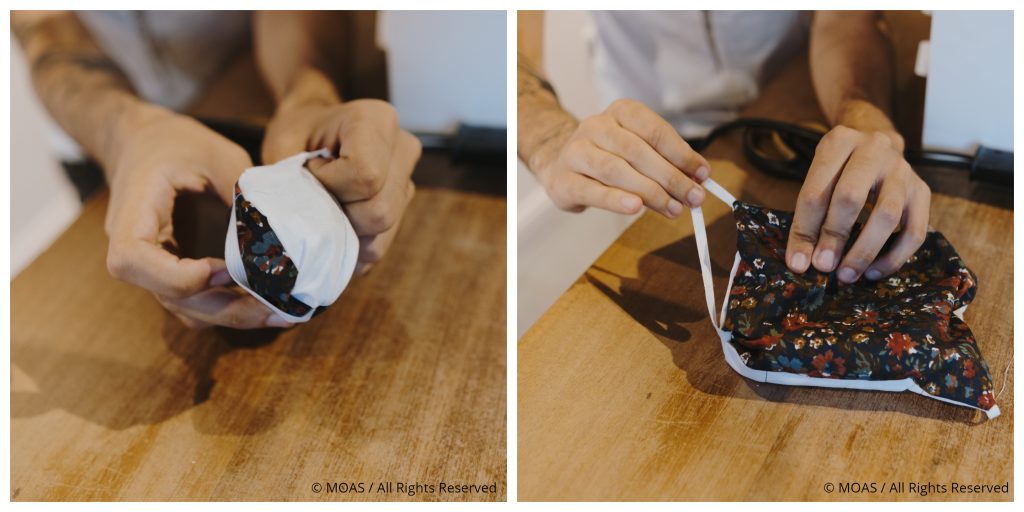
- Insert the pipe cleaner through the gap and push it with your fingers to the very top of the mask. Once it’s in place, stitch all along the bottom edge of the pipe cleaner, securing it in place at the very top of the face mask.
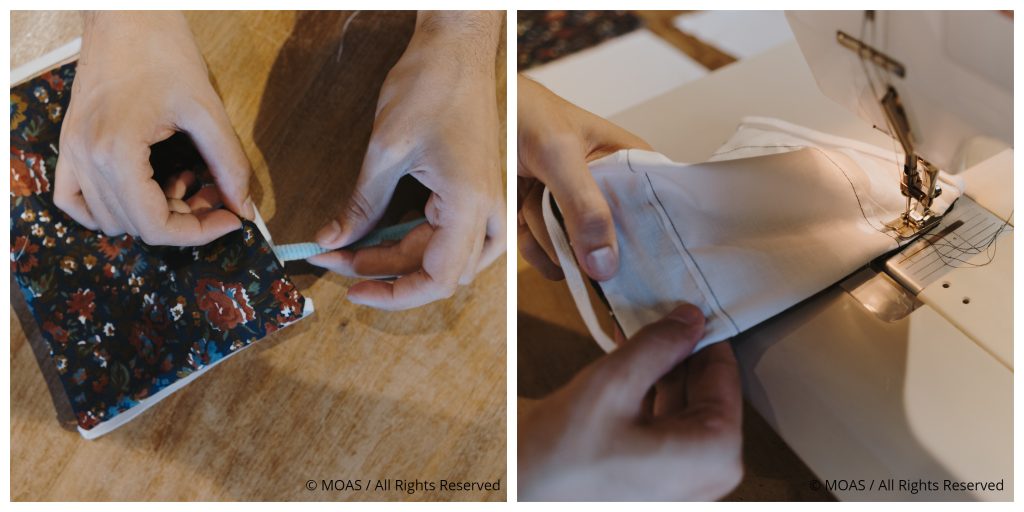
- Folds: pinch the mask and fold downwards 2 times creating pleats (each fold should be of around 1cm). To stitch it in place, start from where you left off and overstitch all the way round securing both fold and elastic in place. When you get to the opening, hold it in place and stitch all the way where you left off where you started with the pipe cleaner.

Your masks are ready!
Once you have completed your masks, you should wash them on a 40-degree cycle and hang them in the sun to dry and sanitize (UV light helps the sanitization process, so sun-drying is preferred).
- Home-made masks are not a substitute for surgical or N-95 vent masks. They will, however, protect in part in the absence of other PPE and can be used by non-medical personnel to limit exposure.
- Masks should be machine washed on a high heat and sun dried or hand washed with soap and water or boiled in a pan of water to sterilize and sun dried.
- Masks should be put on with clean hands, secured in place so as to fully cover nose and mouth, and not touched or adjusted until removal.
- When removing mask, do so with clean hands, avoid touching rest of face, put directly into a wash and re-wash hands again.
- If adjustments are needed when wearing, wash hands, remove mask touching as little of the front fabric or face as possible, re-fit and wash hands again.
Don’t forget to take pictures of the process & tag us @moas (FB) @moas_eu (TW/IG) using #MOASMasks and #COVID19
Mask cleaning instructions: https://www.moas.eu/wp-content/uploads/2020/04/MOAS-Mask-cleaning-instructions-EN.pdf
Donate what you can at www.moas.eu/donate if you want to support our operations.

